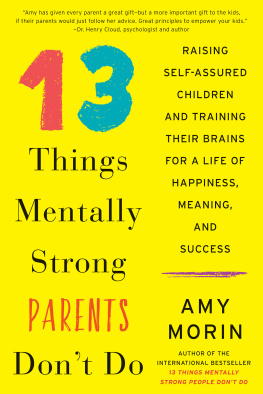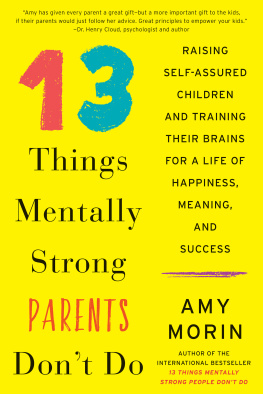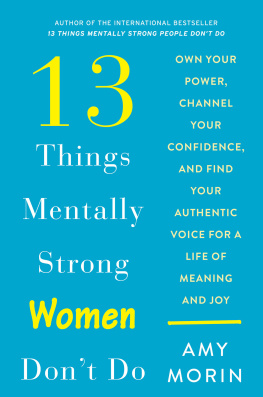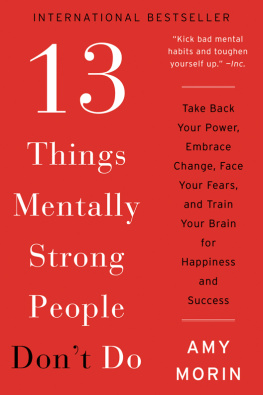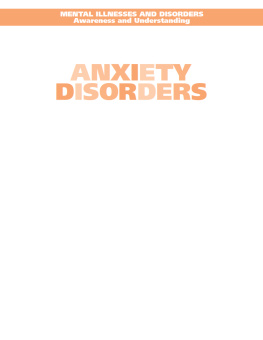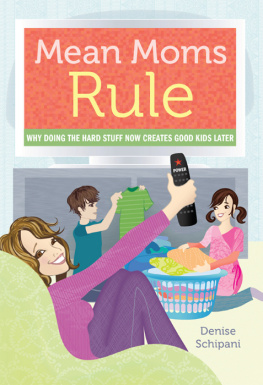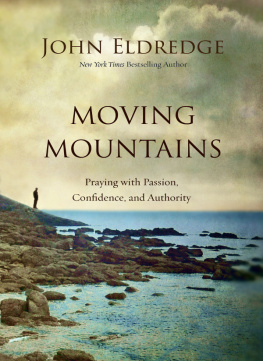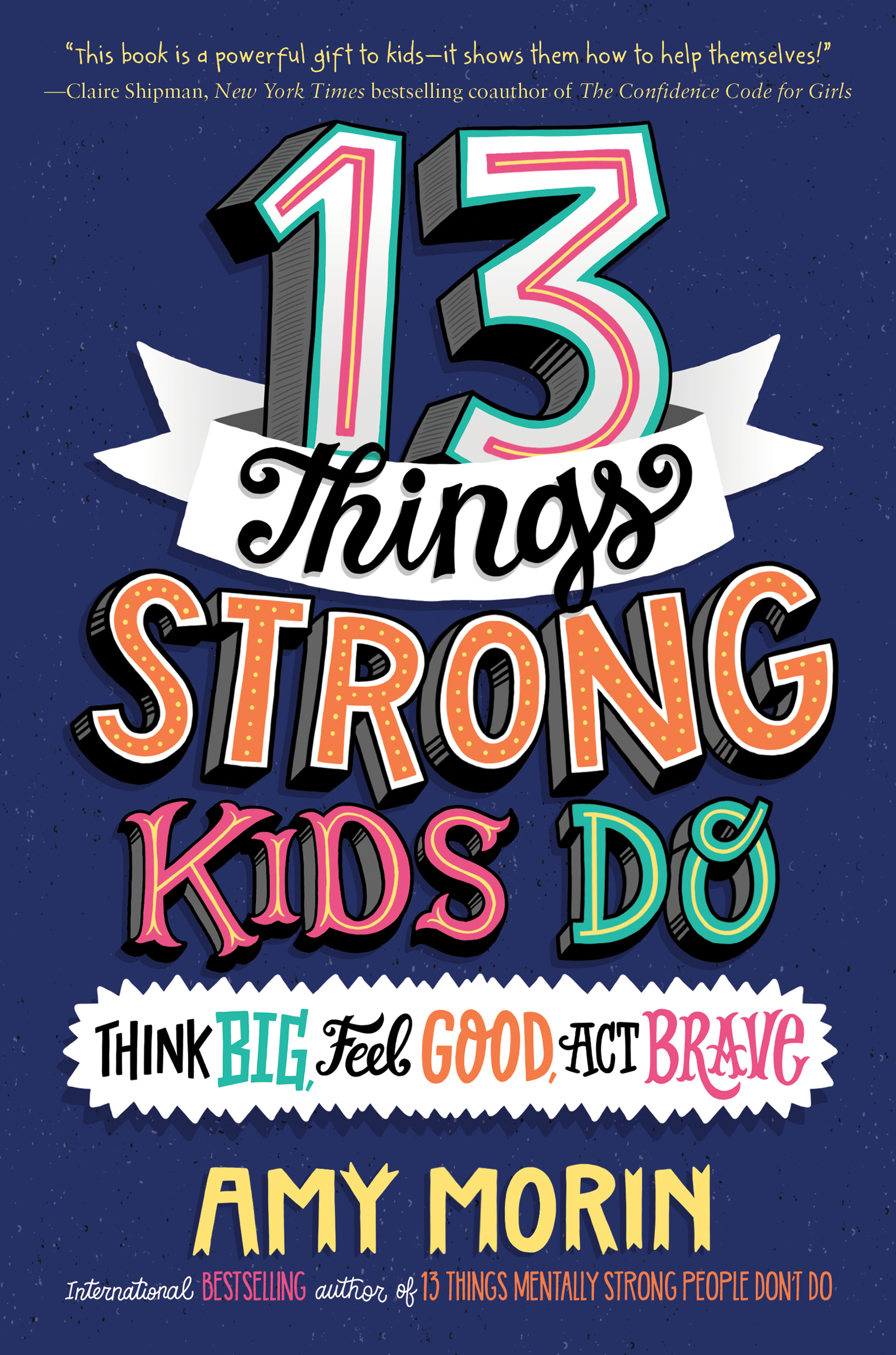To all the kids
who want to become a little stronger today
than they were yesterday
Contents

A while back, I wrote a book called 13 Things Mentally Strong People Dont Do. It was a book for adults about how to get rid of bad habits. But readers kept saying the same thing about it: I wish I had learned these things back when I was a kid.
So I wrote this book specifically for kids! Were going to talk about how to start good habits now so you dont build bad habits later. Your future self will thank you for reading it today!
But before we talk about those good habits, lets talk a little about what it means to be strong in the first place.
There are lots of different kinds of strength. You might be the kind of strong kid who has big muscles and can lift heavy things. Or maybe youre a strong student who does really well in every class.
Those kinds of strengths can be helpful in life. But theyre not what we are going to talk about here.
Instead, were going to talk about mental strength. If you arent sure what that means, dont worry! Youre not alone. Many adults arent quite sure, either.
Mental strength is what it takes to become your best self. Building mental muscle requires you to pay attention to three things: the way you think, feel, and act.
Thinking big, feeling good, and acting brave will all help you develop bigger mental muscles. And when you have bigger mental muscles, its easier to think big, feel good, and act brave! Its a two-way street.
THE LINK BETWEEN THOUGHTS, FEELINGS, AND ACTIONS
Look at it this way. Your thoughts, feelings, and actions are all connected, and they create a cycle that can either be positive or negative.
Heres an example:
SITUATION: Its raining outside.
KID #1:
- Thinks: This is terrible. I cant go outside and have fun!
- Feels: sad, bored, angry
- Acts: He sits inside all day, staring out the window and sulking.
KID #2:
- Thinks: I guess I cant play outside. Ill see if I can have a friend come over instead.
- Feels: happy, hopeful, excited
- Acts: She invites a friend over, and they have fun together.
Which kid feels better? Clearly, kid number two! That kid found a way to make the best of the situation.
In real life, of course, we get caught in situations that are more complex than rainy days.
But if you develop healthy habits to make the best of those situations, you will build your mental muscles until you can handle almost any challenge life throws your way.
So thats what this book is about. Each chapter will teach you how to think big, feel good, and act braveso you can become the strongest and best version of yourself!
BEING STRONG VS. ACTING TOUGH
Before we learn how to become stronger, lets get one thing clear: being strong is not the same as acting tough. Many peopleincluding adultsget confused about what it means to be a strong kid.
A parent who doesnt understand what it means to be strong might tell their kids, Stop crying! Crying is for babies! But crying isnt a sign of weakness. And its not just for babies, either. Sometimes tears can be a sign of strength!
Strong people show their feelings. People who are just acting tough pretend they dont even have feelings. Theyre more likely to say, I dont care. That doesnt bother me, even when they feel sad about something.
Sometimes people think being strong means acting like a bully. But thats definitely not true! The reason most bullies try to control other people is because they cant control their own thoughts, feelings, and actions. Strong people focus on controlling themselves instead of others.
Here are some more key differences between being strong and acting tough:
KIDS WHO ARE WORKING ON BEING STRONG:
They want to become better. They say things like, I could really work on my self-confidence!
KIDS WHO ARE TRYING TO LOOK TOUGH:
They deny that they have anything to work on. They say things like, Im perfect just the way I am.
KIDS WHO ARE WORKING ON BEING STRONG:
They acknowledge and express their feelings.
KIDS WHO ARE TRYING TO LOOK TOUGH:
They pretend they dont have feelings (except maybe for anger).
KIDS WHO ARE WORKING ON BEING STRONG:
They focus on becoming better on the inside. They arent worried about how they look to other people.
KIDS WHO ARE TRYING TO LOOK TOUGH:
They work hard to look like they are doing well on the outside. They worry a lot about what other people think.
KIDS WHO ARE WORKING ON BEING STRONG:
They are interested in liking themselves. They care about their own character.
KIDS WHO ARE TRYING TO LOOK TOUGH:
They are mostly interested in making sure other people like them. They care more about their reputation.
KIDS WHO ARE WORKING ON BEING STRONG:
They believe that mistakes and failures can make them better.
KIDS WHO ARE TRYING TO LOOK TOUGH:
They believe that only losers fail. They hide their mistakes.
As you have probably figured out by now, mental strength isnt about thinking everything is great, pretending to feel happy all the time, or acting like you dont have any problems.
Its about learning how to think, feel, and act in a way that helps you become your best self.
Its also about liking who you are now and trying to become even better!
MENTAL STRENGTH TRAINING
Each chapter of this book talks about one thing strong kids do. When you are reading, you might think, Oh no, I dont do this! Dont worry. None of us do these things all the time (not even adults).
That doesnt mean youre not strong. No one is perfect! We all have room for improvement.
And thats what this book is for. Each chapter will show you exercises that can help you grow a little stronger. With practice, youll find its easier to start doing the things strong kids do.
Thats because mental strength is a lot like physical strength. If you want to have bigger physical muscles, you need to lift weights.
If you want bigger mental muscles, you need to exercise, too. But dont worry, this book wont ask you to do any jumping jacks or run any sprints. Were talking about mental exercises here!
Some of the exercises will teach you ways to solve a problem. Other exercises will show you ways to solve how you feel about a problem. This is because some problems can be solved, and others cant.
Heres an example of the difference:
If you have fallen behind on your homework, you might feel bad. The best way to respond to a problem like this is to figure out how to get caught up on your work. Then youll feel better. Its a problem you can solve.
But if you feel bad because your mom is sick, you cant fix that. You might be able to bring her chicken soup to help her feel better, but you cant make her illness disappear. So you might find it helpful to do an exercise that helps you worry a little less or feel a little less sad. This could help you solve how you feel about the problem.
So when you are feeling bad about something, ask yourself, Do I need to solve the problem? Or do I need to solve how I feel about the problem? Then choose the exercises that are most likely to help you.
Lets do a little warm-up now before we get started with . Here are three exercises that will prepare you for the rest of this book and increase your chances of success!


